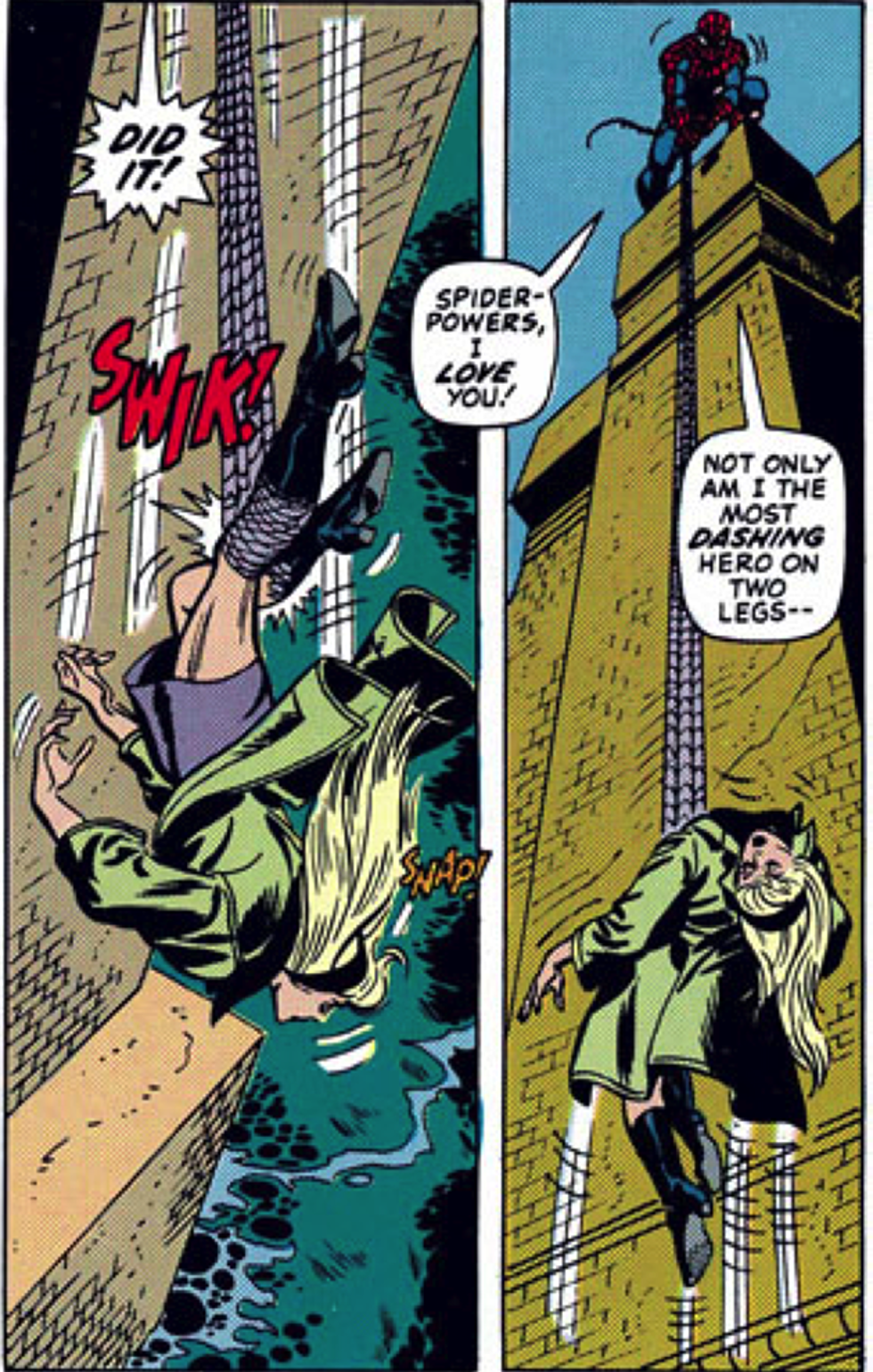
The Lasting Impact Of ‘The Night Gwen Stacy Died’
Decades after its release on March 13 1973, The Amazing Spider-Man #121 by Gerry Conway, Gil Kane, John Romita and Tony Mortellaro remains one of the most affecting, heartbreaking superhero comics to see publication. What starts off as a traditional superhero versus supervillain battle over the fate of the hero’s love interest takes a tragic turn when Gwen Stacy dies despite the hero's best efforts to save her --- and in that moment, superhero comics grew up in a major way.
Gwen Stacy wasn’t the first shocking comic book death, as Lightning Lad of the Legion of Super-Heroes died ten years earlier in 1963’s Adventure Comics #304. Lightning Lad, however, was alive and back in the Legion by the end of the year, and Gwen Stacy’s death still stands, and continues to have an effect on modern Spider-Man comics.
The story is groundbreaking in the sense that, while the Green Goblin is the one to throw her from the George Washington Bridge, it’s the whiplash from Spider-Man’s attempt to save her that ultimately kills Gwen. In one of the all time great pieces of lettering by Artie Simek, a small “SNAP!” is placed just by Gwen’s neck, and often goes overlooked; overshadowed by the flashier “SWIK!” effect of the web attaching to her leg.
Gwen’s death raised the stakes for Spider-Man comics forever, and after the deaths of his Uncle Ben, and Gwen’s father Captain George Stacy, counted as his biggest failure to date. Those three deaths all represent something different to Spider-Man, but Gwen’s death shows how the best of intentions still might not be enough. The thought that Peter could have saved Gwen, had he done something different, helps define the character to this day.
In hindsight, Gwen Stacy’s death is undeniably an example of the “Women in Refrigerators” trope --- a term coined by Gail Simone to describe women killed off in order to give their male love interests a persona; motivation to fight the villain. The trope takes its name from a particularly egregious example, when the DC Comics villain Major Force killed Kyle Rayner’s girlfriend Alex, and stuffed her remains inside their refrigerator.
When Sony rebooted the Spider-Man films with The Amazing Spider-Man series in 2012, Gwen Stacy was brought to life on screen by Emma Stone, and many fans hoped that she wouldn’t suffer the same fate as her comic book counterpart. While Stone’s portrayal of Gwen was one of the highlights of a mediocre series, Sony opted to somewhat adapt "The Night Gwen Stacy Died" in 2014's Amazing Spider-Man 2, replacing Norman Osborn with his son Harry, and removing Peter’s direct culpability in the actual death.
Though Gwen Stacy is still dead in the main Marvel Universe continuity, the publisher has found a way to simultaneously honor the importance of that event and circumvent it. Gwen Stacy received a new lease on life in 2014 courtesy of Jason Latour, Robbi Rodriguez and Rico Renzi, as the alternate-dimension character Spider-Gwen. While initially only intended to be a one-off character as part of the Spider-Verse event, the Spider-Gwen team built such a rich and vibrant world in one issue, and created such an instantly iconic costume, that the character had to return to meet popular demand. Spider-Gwen flips the script so that Gwen Stacy gets the powers and becomes Spider-Woman, and Peter Parker is the one to die.
"The Night Gwen Stacy Died" remains an all-time classic Spider-Man comic, and the fact that it holds up today is a testament to its legendary creators. That Gwen was reinvented for the 21st century is a testament to the core strength of the character, and her importance to the Spider-Man mythos as a whole.
More From ComicsAlliance







![Marvel Legends’ Latest Spider-Man Wave Builds a Dream of a Sandman Figure [Review]](http://townsquare.media/site/622/files/2017/03/IMG_1721.jpg?w=980&q=75)

